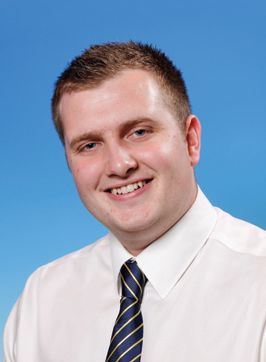 Craig Marshall, project engineer at NEL, explains the advantages of prolonging intervals between meter calibration and shows how advanced metering and developments in diagnostic software, secondary diagnostics and remote access takes us a step closer to calibration-free Utopia
Craig Marshall, project engineer at NEL, explains the advantages of prolonging intervals between meter calibration and shows how advanced metering and developments in diagnostic software, secondary diagnostics and remote access takes us a step closer to calibration-free Utopia
Calibrations of flow measurement devices in the oil and gas industry are required by government and regulatory bodies worldwide. With the total cost of such calibrations estimated to be in the region of $50,000 for on-shore fiscal meters, or $70,000 for off-shore ones, reducing the frequency of the calibration is an attractive concept. Therefore, the utopian goal for any meter manufacturer, operator or service provider is to have a calibration-free instrument. Currently, the calibration frequency remains a calendar-based event and until users can find a way to prove their meter performance in-situ, they may not be able to save costs by extending recalibrations.
Modern meters can now record and store a vast amount of flow measurement-related data. Enhanced data acquisition and digital signal processing enables more detailed monitoring, with the recorded data used as diagnostic tools to identify any problems within the metering system and to complete a ‘health-check’ of the meter in operation.
 If measurements exceed accepted levels, then the system alerts an operator. These alarms can be time-dependent, which means any erroneous measurement will not be recorded as a fault until the software has confidence that the problem is real and not due to one instantaneous fault or error with the system.
If measurements exceed accepted levels, then the system alerts an operator. These alarms can be time-dependent, which means any erroneous measurement will not be recorded as a fault until the software has confidence that the problem is real and not due to one instantaneous fault or error with the system.
Another successful application of diagnostic software is the built-in remote access. Using a high-speed connection, the data produced from the meters can be accessed from anywhere in the world. This is especially advantageous when multiple measurements are being taken over large distances or in harsh conditions, as it may not be feasible to have engineers at each metering location. Remotely accessing diagnostic information means industry has the confidence that the measurement systems are functioning correctly. Additionally, trending of the data over time can then be used to provide regulators with information on the present state of meters, with the aim of reducing the need for recalibration.
 The use of such secondary diagnostics takes us a step closer to calibration-free utopia because taking a fingerprint of the diagnostic parameters during calibration can provide a traceable link to meter performance. Once the meter is installed for use, checking the diagnostics can ensure no change or shift from the calibration, demonstrating that it has been successfully transferred to the operating location and conditions.
The use of such secondary diagnostics takes us a step closer to calibration-free utopia because taking a fingerprint of the diagnostic parameters during calibration can provide a traceable link to meter performance. Once the meter is installed for use, checking the diagnostics can ensure no change or shift from the calibration, demonstrating that it has been successfully transferred to the operating location and conditions.
To help in the analysis of diagnostics, many manufacturers have developed proprietary software that has the ability to produce automatically generated reports. Using embedded technical knowledge which has been gained from years of operational data, the software can highlight when measurement system problems are detected or even when calibrations are actually necessary. This is the first stage in moving from a calendar-based calibration interval to a condition-based one.
Using qualitative information about the flowing fluid and the embedded technical knowledge, the resultant flowrate information can be reassessed and a confidence level applied. However, there are some situations where knowing a problem exists is not good enough and diagnostics may be used to help remedy the issue.
For example, meters are being asked to measure in increasingly difficult circumstances, i.e. two or three phase flow, and this often leads to problems with mis-measurement. Inaccurate measurement has financial implications, so it is essential to validate and include secondary flow information to help resolve some of the measurement problems. For example, either by using additional measurement techniques in conjunction with other primary methods or secondary diagnostics, it may be possible to predict how much of a second phase is present. This turns single phase devices into two or three phase meters.
This may seem unlikely, but recent test work completed at the UK National Standard Flow Measurement Facilities at NEL and supported by the UK Government’s National Measurement System, shows promising results for ultrasonic meters tested with gas injection. By comparing the trends, corrections can potentially be created that can calculate gas content, reducing measurement error associated with gas entrainment in liquid flow.
There is real evidence that proves diagnostic technologies can make a contribution to operational efficiency. However, if secondary information is not used appropriately, the advantages will not be achieved. This will make the understanding and proper application of diagnostics a priority for future flow metering developments in the oil and gas industry.
NEL
T:?01355 220222
